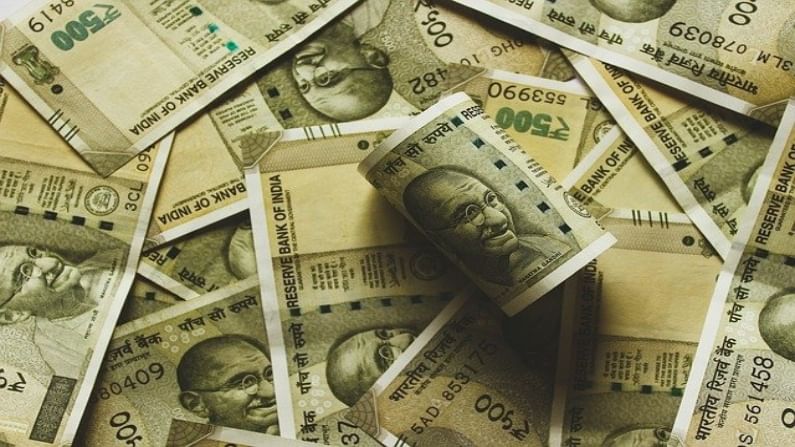Digital payments rise, but cash demand equally strong
Digital payments and cash complement each other as both clock substantial growth in the pandemic year
- Anto T Joseph
- Last Updated : April 28, 2021, 12:16 IST

India has reported a steady growth momentum in digital transactions in 2020-21 while currency in circulation grew 17% to Rs 28.6 lakh crore as on March 31 from a year ago. This means it has grown 59% in less than five years since India demonetised 84% of total currency notes on November 8, 2016. The currency in circulation then stood at Rs 17.97 lakh crore as on November 4, 2016.
According to the Reserve Bank of India (RBI), the Real Time Gross Settlement (RTGS) data showed a slowdown in wholesale transaction value in 2020-21, owing to the Covid-19 pandemic. The volume growth however withstood the pandemic, said the central bank.
On the flip side, retail payments have grown strongly compared to a year ago. Transactions through National Electronic Funds Transfer (NEFT), National Electronic Toll Collection (NETC) and the Bharat Bill Payment System (BBPS) have registered acceleration over the previous year.
Healthy growth
The RBI said the other digital retail payments like the Unified Payments Interface (UPI), Immediate Payment Service (IMPS) and National Automated Clearing House (NACH) have demonstrated “healthy growth”. It reported a near doubling of both transaction volume (from 12.5 billion to 22.3 billion) and value (from Rs 21.3 lakh crore to Rs 41 lakh crore) over a year.
On the cash front, withdrawals through Aadhaar-enabled Payment System (AePS) have accelerated on account of direct benefit transfers (DBT) under the government’s social assistance programmes. Owing to the pandemic-induced push, the AePS has made rapid strides in India’s digital payments, especially in rural areas, from humble beginnings.
The Cheque Truncation System (CTS) reported a dwindling number of takers, which is, according to the RBI, a testament to the shift towards digital modes.
The central bank said the developments in March and April 2021 have demonstrated some notable features of the turnaround underway in India’s digital ecosystem. While RTGS transaction volume is swelling compared to March and April 2020, payment modes such as NEFT, UPI, IMPS, NETC and BBPS have worked overtime and clocked acceleration in year-on-year growth rates in both transaction value and volume.
Demand for cash
Meanwhile, the value of interbank cash withdrawals logged under the National Financial Switch witnessed significant growth in March and April after decelerating in most months of 2020-21, suggesting a reinstatement of demand for currency notes, according to the RBI.
With FASTags becoming mandatory since February 2021, NETC growth numbers jumped in March (129% in volume and 117% in value terms, compared with 44% and 39% in the previous month) and are expected to show tremendously high year-on-year growth in April, due to the base effect from the stringent lockdown last year.
A few recent innovations in digital payments include the RuPay SoftPoS and the National Payments Corporation of India’s (NPCI) initiative to revive digital payments on feature phones by initiating development of a voice-enabled payments product. RuPay SoftPoS transforms near-field communication (NFC) enabled smartphones into Point-of-Sale terminals for retailers, digitally enabling merchants to accept contactless payments.
Digital payments ecosystem
The RBI said these initiatives are in line with the mission of the RBI’s Payments Infrastructure Development Fund to boost acceptance and lower the cost of digital payments in emerging India. The central bank said there has been enthusiasm over its call to the private sector to establish Umbrella Entities for retail payments, which has piqued interest of well-established conglomerates and unicorns alike. This move bodes well for the RBI’s long-standing endeavour to nurture innovation and competition in the sector.
The Ministry of Electronics and IT (MeitY) has provided a much-needed push on the hardware side with its production-linked incentive (PLI) scheme, for which it has started inviting applications for the second round of the scheme. This will bolster the country’s self-reliance in motherboards, semiconductors, and other electronic components.
Going ahead, Digital India has potential to grow.
Download Money9 App for the latest updates on Personal Finance.
Related
- PhonePe vs. GPay: Indian digital payment giants up for a tussle
- Why are e-comm users turning extra cautious? How to avoid dark pattern attacks?
- Raining offers on Flipkart & Amazon this monsoon
- Microsoft Global Outage: What led to the ‘Blue Screen of Death’?
- Paste FASTag on windshield or pay double toll
- Save your card from getting cloned!

